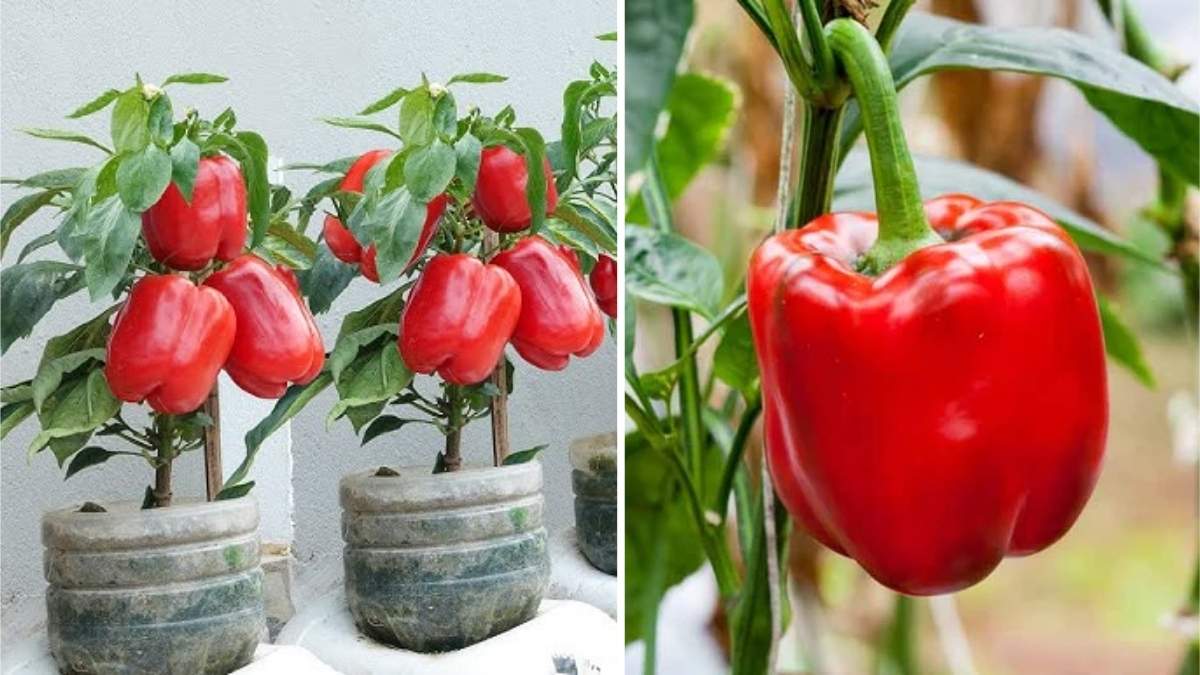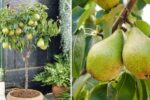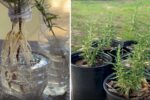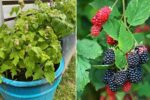Red bell peppers are not just a delicious addition to your meals they’re also a joy to grow! Whether you’re an experienced gardener or a beginner looking to add a splash of color to your outdoor space, growing red bell peppers in containers is an ideal solution, especially if you have a balcony or terrace. The best part? You don’t need a garden to enjoy fresh, homegrown peppers. Here’s how to successfully grow red bell peppers in containers and transform your small outdoor space into a productive, vibrant garden.
Why Grow Red Bell Peppers in Containers?
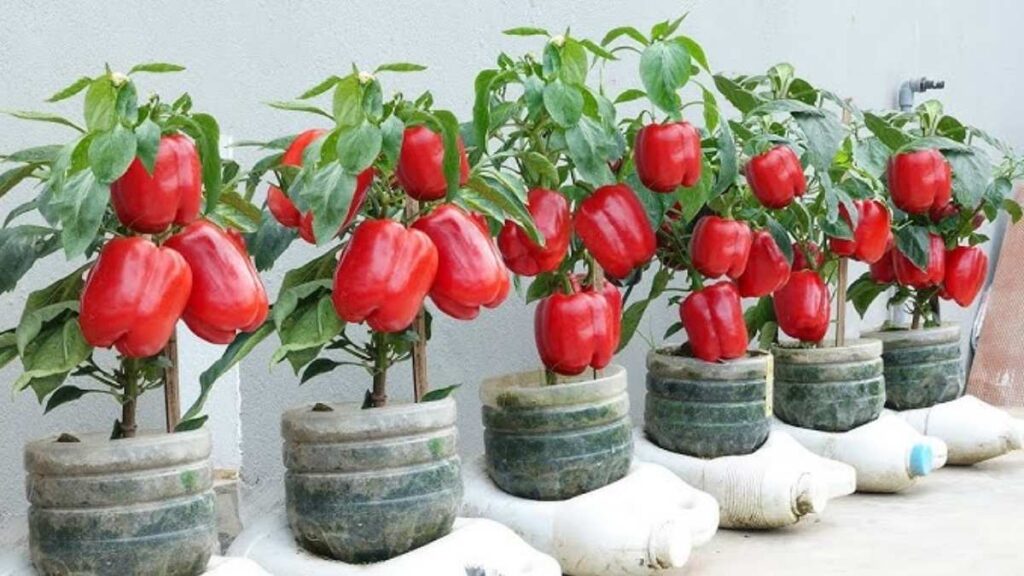
Growing red bell peppers in containers comes with several benefits. First, they are compact and perfect for small spaces like balconies, terraces, or even patios. Peppers thrive in well-drained, nutrient-rich soil and can easily be managed in containers, which helps you control their growing conditions more effectively. Additionally, growing peppers at home gives you access to fresh, pesticide-free produce right at your doorstep. Plus, they add a beautiful burst of color to any outdoor space!
Materials You’ll Need
Before you get started, make sure you have the following materials on hand:
- Healthy Red Bell Pepper Plants (or seeds)
- Large containers (at least 12-18 inches deep)
- High-quality potting mix (preferably with compost)
- Fertilizer for vegetables
- Watering can or hose with a gentle spray
- A sunny location (at least 6-8 hours of sunlight daily)
- Support stakes or cages (optional)
Step 1: Start with Healthy Plants or Seeds
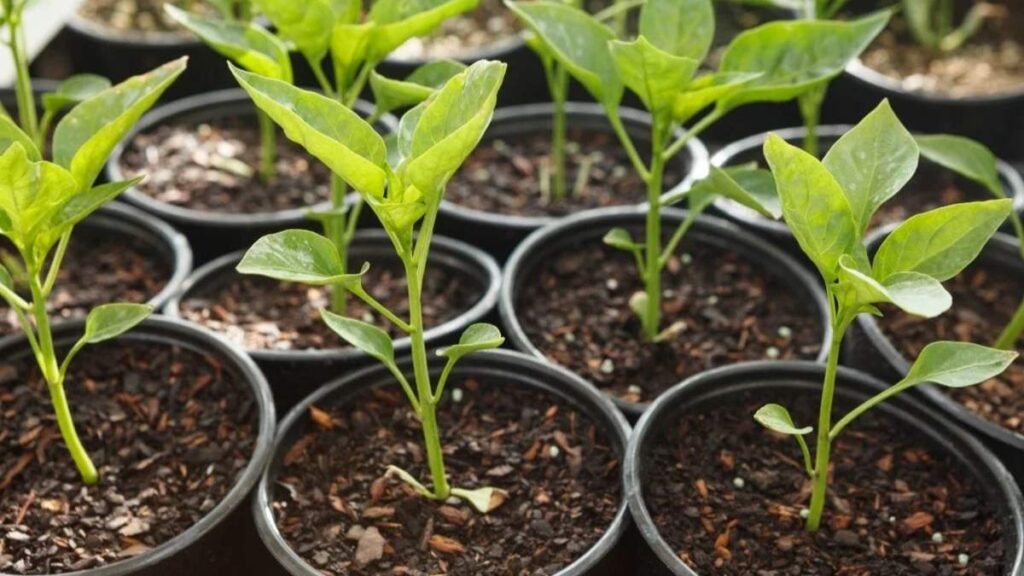
The first step in growing red bell peppers is choosing whether to start from seeds or young plants. If you’re new to growing peppers, buying young plants from a nursery or garden center can be a great option. Choose plants with thick, sturdy stems and vibrant green leaves signs of a healthy start.
If you prefer starting from seeds, plant them indoors about 8-10 weeks before your last expected frost. Keep them in a warm spot (around 70°F or 21°C) and ensure they get enough light. Once the seedlings have grown strong enough and outdoor temperatures have warmed up, you can transplant them into containers.
Step 2: Choose the Right Containers
Red bell peppers thrive in large, deep containers, so make sure to select pots that are at least 12-18 inches deep. This allows enough room for the roots to spread out. The bigger the pot, the better more space means better growth and higher yields. You can use plastic, ceramic, or terracotta containers, as long as they have drainage holes at the bottom to prevent waterlogging.
If you’re unsure of container size, a 5-gallon pot works well for most pepper plants. You can plant one pepper per pot for maximum growth, or two if the container is large enough.
Step 3: Prepare the Right Growing Mix
Peppers need a light, well-draining soil to thrive. You can either buy pre-mixed potting soil or make your own by mixing equal parts of compost, garden soil, and perlite or sand. Adding compost will enrich the soil with nutrients, while perlite or sand ensures that it drains properly, preventing root rot. Avoid using regular garden soil alone, as it can become compacted in containers and impede root growth.
Step 4: Planting Your Peppers
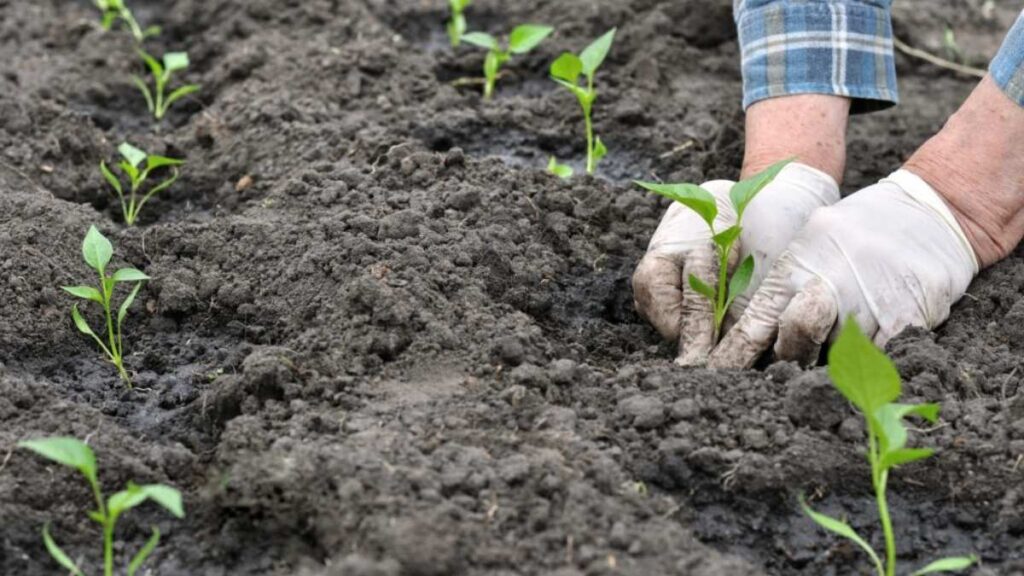
When it’s time to plant your peppers, carefully remove the seedlings or young plants from their nursery pots, taking care not to damage the roots. Gently loosen the roots if they are tightly packed.
Fill the container with the prepared potting mix, leaving about 2 inches from the rim of the pot. Make a small hole in the center, place the plant in, and cover the roots with soil. Press down gently to secure the plant in place. The top of the plant’s root ball should be just below the soil surface.
If you’re planting from seeds, sow them about 1/4 inch deep in the soil. Once the seedlings sprout, thin them out to leave only the strongest plant in each pot.
Step 5: Provide Proper Care for Healthy Growth
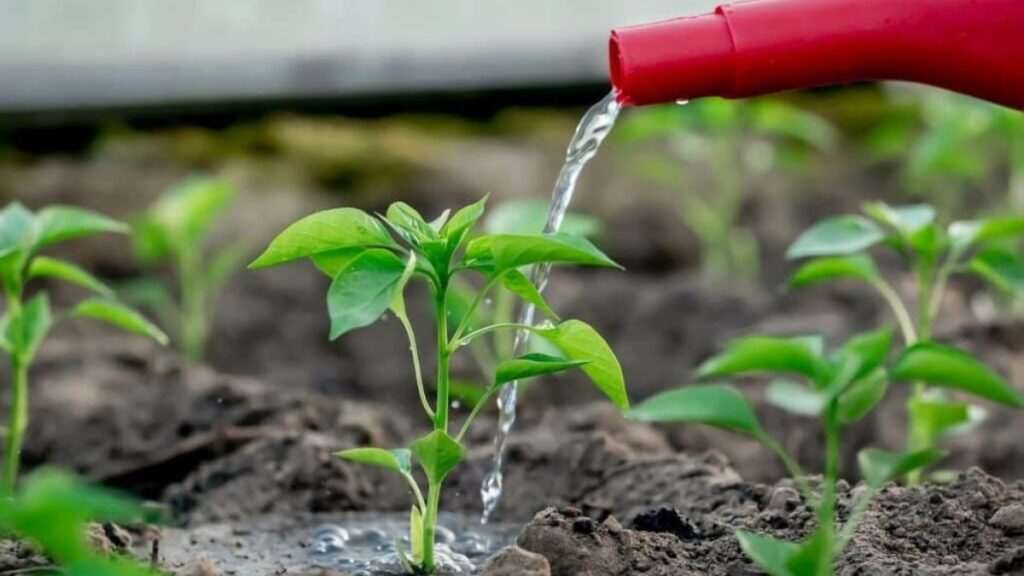
Red bell peppers love the sun, so make sure to place your containers in a location that receives at least 6-8 hours of direct sunlight each day. A sunny balcony or terrace is perfect!
Watering
Peppers like consistent moisture but dislike being waterlogged. Water the plants regularly, but ensure the soil dries out between waterings. The best way to water is deeply but infrequently, allowing the water to reach the roots. If you notice yellowing leaves or wilting, you might be overwatering.
Fertilizing
To support healthy growth and fruit production, feed your red bell peppers with a balanced vegetable fertilizer. A good rule of thumb is to fertilize once every 2-3 weeks during the growing season. You can also mix some slow-release fertilizer into the potting mix when you plant to give the peppers a steady supply of nutrients.
Temperature
Peppers love warmth! Ideally, they should be grown in temperatures between 70°F and 85°F (21°C to 29°C). If temperatures fall below 60°F (15°C) for extended periods, it could stunt the plant’s growth.
Step 6: Supporting the Plants
As your red bell pepper plants grow, they may need a little support to stay upright. Use stakes or small cages to gently tie the plants, especially as they begin to bear fruit. This will prevent the stems from breaking under the weight of the peppers.
Step 7: Harvesting Your Peppers
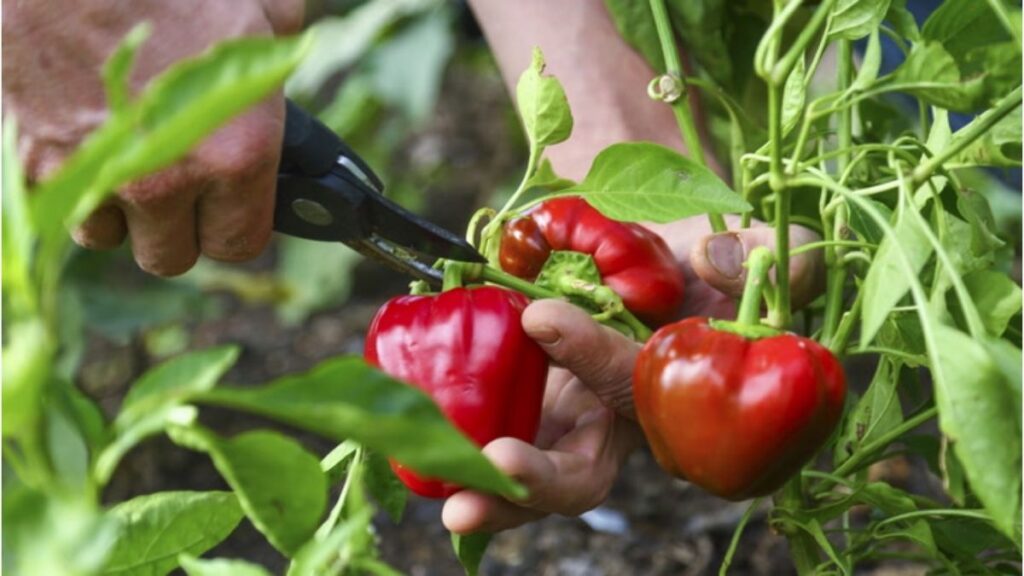
After 60-90 days, your red bell peppers will be ready to harvest! Wait until the peppers turn a deep red color, which indicates that they have reached full maturity. To harvest, simply cut the peppers from the plant with a sharp knife or pruning shears, making sure to leave a small part of the stem attached.
Step 8: Expanding Your Container Garden
As your peppers grow and produce more fruits, you may want to expand your balcony or terrace garden. Consider adding more containers or experimenting with different types of peppers. You can even try growing other vegetables like tomatoes, herbs, or lettuce in a similar way.
Conclusion
Growing red bell peppers in containers is a fun and rewarding way to enjoy fresh produce without needing a large garden. By following these simple steps starting with healthy plants, providing the right care, and harvesting at the right time you can enjoy a bountiful harvest right from your balcony or terrace. Plus, the bright colors and delicious taste of your homegrown peppers will make all the effort worth it. Happy gardening!

